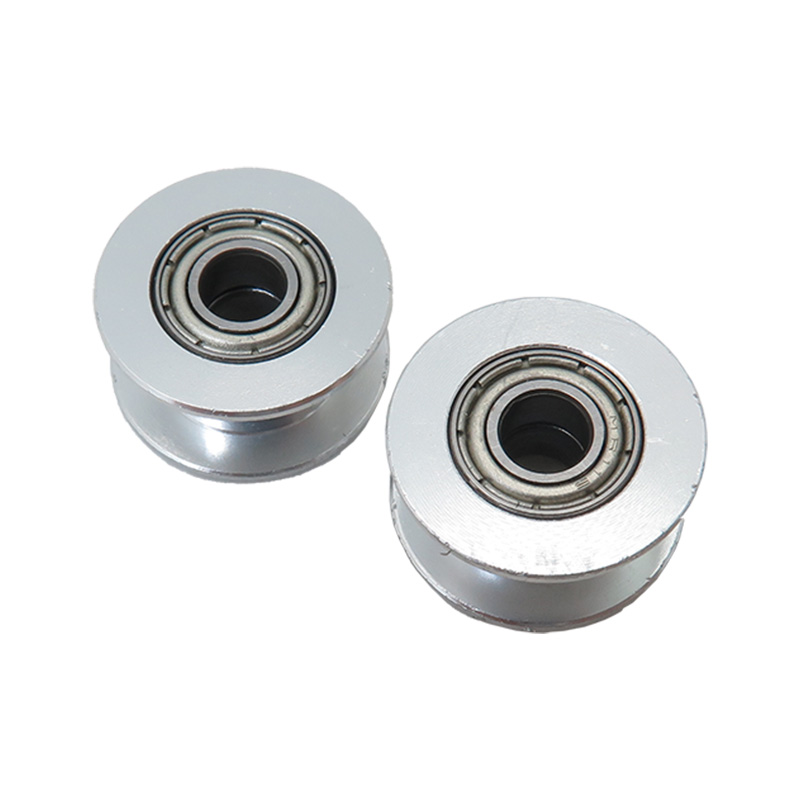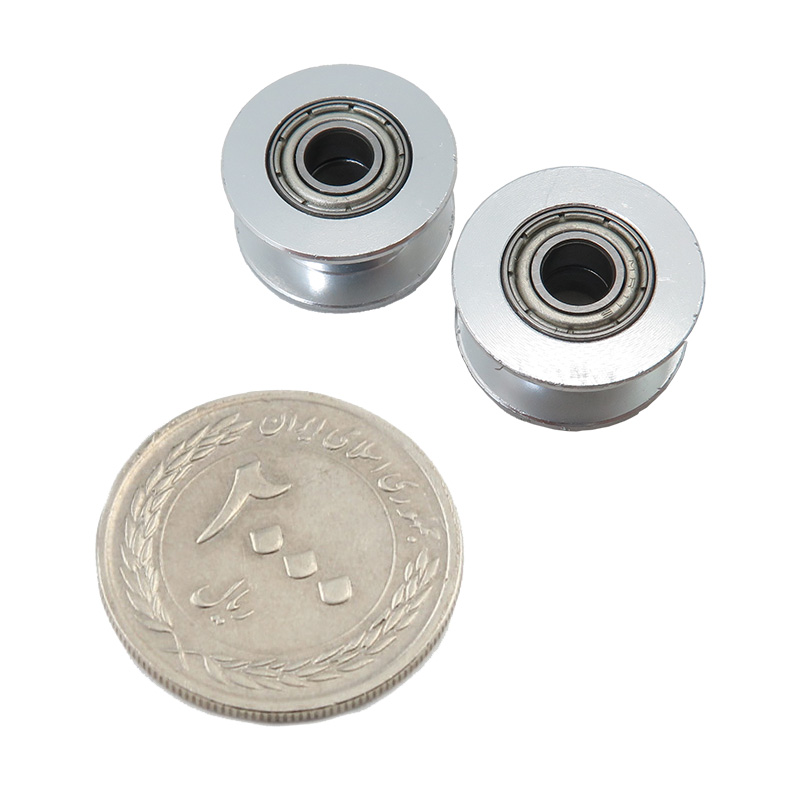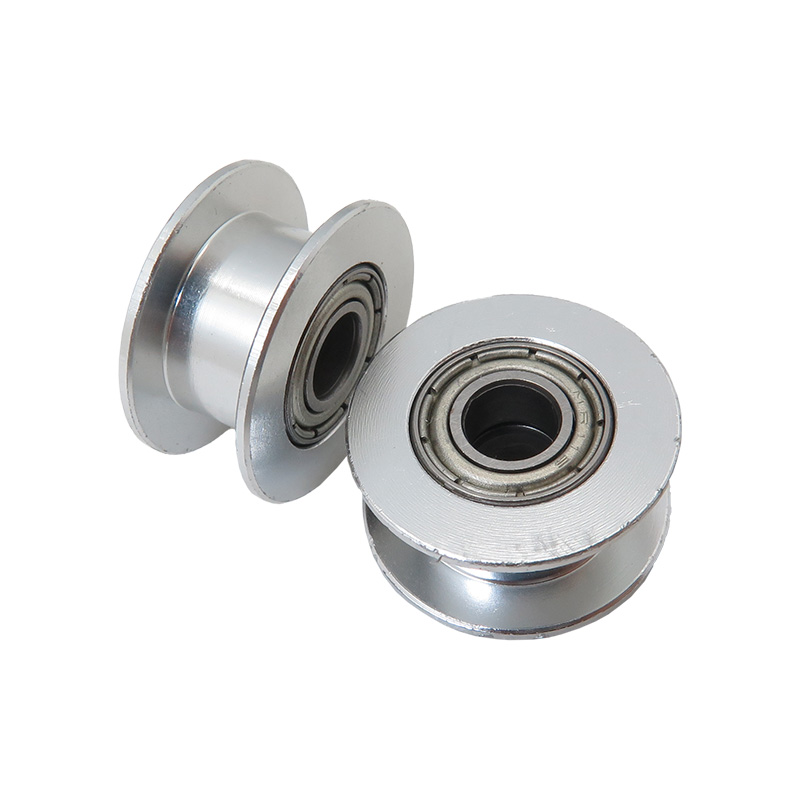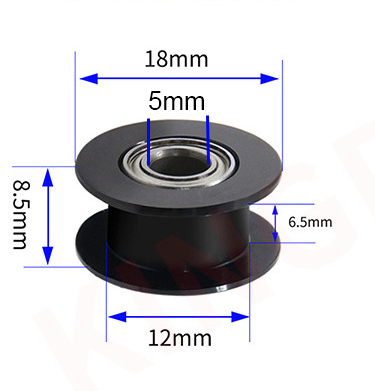105,800 تومان
کالا موجود استموجودی انبار : 11 عدد
علاقه مندان : 13 نفر
وضعیت : فعال
تعداد مرجوعی : 0
دنبال کنندگان : 18 نفر
قدمت : 10 سال و 18 روز
وزن : 7 گرم
کل فروش : 2897 عدد
تعداد سفارش ها : 590 سفارش
5 از 5.0 با 5 رای
پولی هرزگرد پرینتر سه بعدی مدل GT2 بدون دندانه محور 5mm
پولی هرزگرد مدل GT2-20 بدون دندانه با شفت 5 میلیمتر، یکی از قطعات کلیدی در طراحی سیستمهای حرکتی دقیق مانند پرینترهای سه بعدی محسوب میشود. این پولی با ساختار بدون دندانه و طراحی استاندارد سری GT2، برای هدایت روان تسمه تایمینگ و کاهش نویز و لرزش در مسیر حرکت بسیار مؤثر است. جنس آلومینیومی آن، علاوه بر وزن سبک، استحکام بالایی در برابر فشار و سایش فراهم میآورد. قطر کلی پولی 18 میلی متر و قطر محل قرارگیری تسمه 12 میلی متر است که با پولی شفت 5 میلی متر پرینتر سه بعدی کاملاً هماهنگ میباشد.
در سیستمهای انتقال قدرت، استفاده از پولی هرزگرد برای تغییر مسیر تسمه، افزایش زاویه تماس و حفظ کشش تسمه بسیار رایج است. این کار باعث انتقال نیرو بهتر، عملکرد پایدارتر و دقت بالاتر در موقعیتدهی محورها میشود. پولی GT2 بدون دندانه به عنوان پولی هدایتگر در پشت تسمه قرار میگیرد تا تماس تسمه با پولیهای محرک افزایش یابد، بدون آنکه نیروی اضافی وارد شود یا حرکت تسمه مختل شود. همچنین در سیستمهای مبتنی بر استپر موتور، این نوع پولی باعث کاهش حرکتهای گسسته و بهبود کیفیت و دقت چاپ نهایی میشود.
در سیستمهای انتقال قدرت، استفاده از پولی هرزگرد برای تغییر مسیر تسمه، افزایش زاویه تماس و حفظ کشش تسمه بسیار رایج است. این کار باعث انتقال نیرو بهتر، عملکرد پایدارتر و دقت بالاتر در موقعیتدهی محورها میشود. پولی GT2 بدون دندانه به عنوان پولی هدایتگر در پشت تسمه قرار میگیرد تا تماس تسمه با پولیهای محرک افزایش یابد، بدون آنکه نیروی اضافی وارد شود یا حرکت تسمه مختل شود. همچنین در سیستمهای مبتنی بر استپر موتور، این نوع پولی باعث کاهش حرکتهای گسسته و بهبود کیفیت و دقت چاپ نهایی میشود.
این مدل از قطعات پرینتر سه بعدی ارزان ، با کیفیتی قابلاعتماد و قیمتی اقتصادی، انتخابی عالی برای علاقهمندان به ساخت یا ارتقاء پرینترهای سه بعدی، دستگاه های CNC و دیگر سیستمهای حرکتی مبتنی بر تسمه است. نصب آسان، سازگاری با تسمههای استاندارد و عملکرد بدون لرزش، از ویژگیهای برجسته این پولی میباشند.
کاربرد :
- استفاده در پرینترهای سهبعدی برای هدایت تسمه و افزایش دقت چاپ
- کاربرد در دستگاههای CNC کوچک جهت انتقال یکنواخت حرکت
- استفاده در رباتهای آموزشی و صنعتی برای کنترل حرکت محورهای چرخشی
- مناسب برای پروژههای DIY مکانیکی مبتنی بر استپر موتور و تسمه تایمینگ
مشخصات :
- مدل: GT2-20 بدون دندانه
- جنس: آلومینیوم آلیاژی
- تعداد دندانه: فاقد دندانه (سطح صاف)
- قطر شفت (سوراخ مرکزی): 5 میلیمتر
- قطر خارجی پولی: 18 میلی متر
- قطر محل عبور تسمه: 12 میلی متر
- عرض مناسب تسمه: 6 میلیمتر (حداکثر 7 میلی متر)
- ارتفاع کلی پولی: 9 میلی متر
- نوع بلبرینگ: دارای دو بلبرینگ داخلی برای چرخش روان
description:
The GT2 series of belts and pulleys are designed specifically for linear motion. They use a rounded tooth profile that guarantees that the belt tooth fits smoothly and accurately in the pulley groove, so when you reverse the pulley direction, there is no room for the belt to move in the groove.
In a belt drive system, idlers are often used to alter the path of the belt, where a direct path would be impractical.
Idler pulleys are also often used to press against the back of a pulley in order to increase the wrap angle (and thus contact area) of a belt against the working pulleys, increasing the force-transfer capacity.
Belt drive systems commonly incorporate one movable pulley which is spring or gravity-loaded to act as a belt tensioner, to accommodate stretching of the belt due to temperature or wear. An idler wheel is usually used for this purpose, in order to avoid having to move the power-transfer shafts.
Driver pulleys can be fastened to a shaft or bar as opposed to driver pulleys which have a bearing allowing them to rotate freely. Most driver pulleys can be fastened using two set screws, resulting in a reliable setup. For guiding the belt, we offer two types of driven pulleys: with and without teeth (smooth). Driven pulleys allow you to guide the teeth side of the belt without vibrations that would have been caused by running them over a smooth surface.
Idler pulleys are used to take up the slack, change the direction of transmission, or provide clutching action. Idler pulleys are rollers that do not produce any mechanical advantage, nor transmit power to a shaft. Idler pulleys are used to lead a chain around a bend or to take up slack in a drive chain.
The GT2 series of belts and pulleys are designed specifically for linear motion. They use a rounded tooth profile that guarantees that the belt tooth fits smoothly and accurately in the pulley groove, so when you reverse the pulley direction, there is no room for the belt to move in the groove.
In a belt drive system, idlers are often used to alter the path of the belt, where a direct path would be impractical.
Idler pulleys are also often used to press against the back of a pulley in order to increase the wrap angle (and thus contact area) of a belt against the working pulleys, increasing the force-transfer capacity.
Belt drive systems commonly incorporate one movable pulley which is spring or gravity-loaded to act as a belt tensioner, to accommodate stretching of the belt due to temperature or wear. An idler wheel is usually used for this purpose, in order to avoid having to move the power-transfer shafts.
Driver pulleys can be fastened to a shaft or bar as opposed to driver pulleys which have a bearing allowing them to rotate freely. Most driver pulleys can be fastened using two set screws, resulting in a reliable setup. For guiding the belt, we offer two types of driven pulleys: with and without teeth (smooth). Driven pulleys allow you to guide the teeth side of the belt without vibrations that would have been caused by running them over a smooth surface.
Idler pulleys are used to take up the slack, change the direction of transmission, or provide clutching action. Idler pulleys are rollers that do not produce any mechanical advantage, nor transmit power to a shaft. Idler pulleys are used to lead a chain around a bend or to take up slack in a drive chain.



